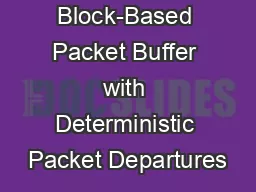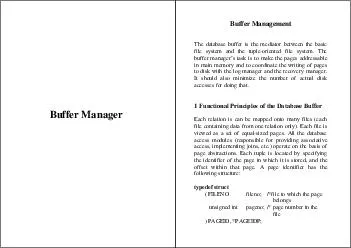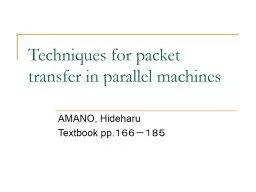PPT-Block-Based Packet Buffer with Deterministic Packet Departures
Author : alexa-scheidler | Published Date : 2018-11-24
Hao Wang and Bill Lin University of California San Diego HSPR 2010 Dallas HPSR June 1316 2010 Packet Buffer in Routers Scheduler and Packet Buffers i n Input
Presentation Embed Code
Download Presentation
Download Presentation The PPT/PDF document "Block-Based Packet Buffer with Determini..." is the property of its rightful owner. Permission is granted to download and print the materials on this website for personal, non-commercial use only, and to display it on your personal computer provided you do not modify the materials and that you retain all copyright notices contained in the materials. By downloading content from our website, you accept the terms of this agreement.
Block-Based Packet Buffer with Deterministic Packet Departures: Transcript
Download Rules Of Document
"Block-Based Packet Buffer with Deterministic Packet Departures"The content belongs to its owner. You may download and print it for personal use, without modification, and keep all copyright notices. By downloading, you agree to these terms.
Related Documents














